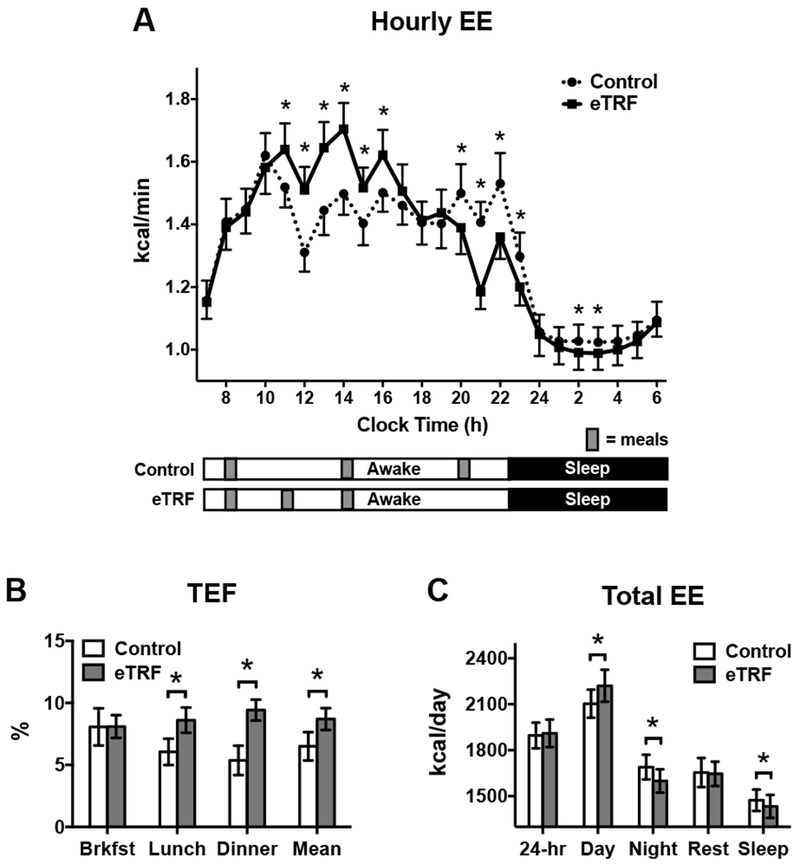Figure 3.

(A) Hourly values of energy expenditure (EE) differed between the early time-restricted feeding (eTRF) and control arms, primarily in the postprandial periods for lunch and dinner. (B) eTRF increased the thermic effect of food (TEF) at lunch, at dinner, and when averaged across the three meals but not at breakfast. (C) 24-hour EE was similar in the eTRF and control arms. Although eTRF increased EE during the daytime, this was offset by a decrease in EE at nighttime and during sleep. Resting energy expenditure (“Rest”) was not different between arms. *P ≤ 0.05.
